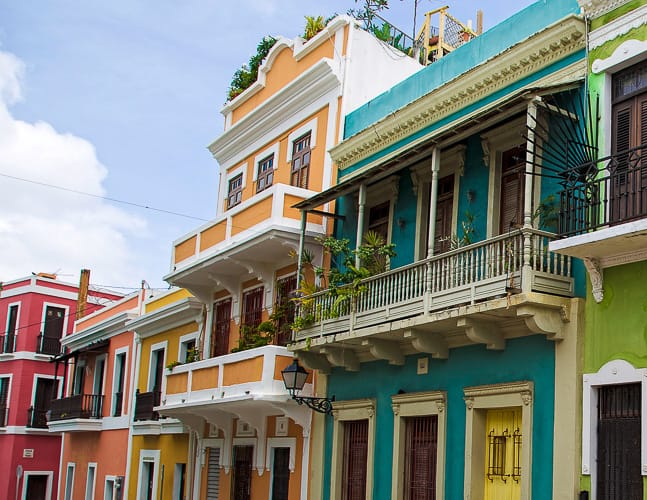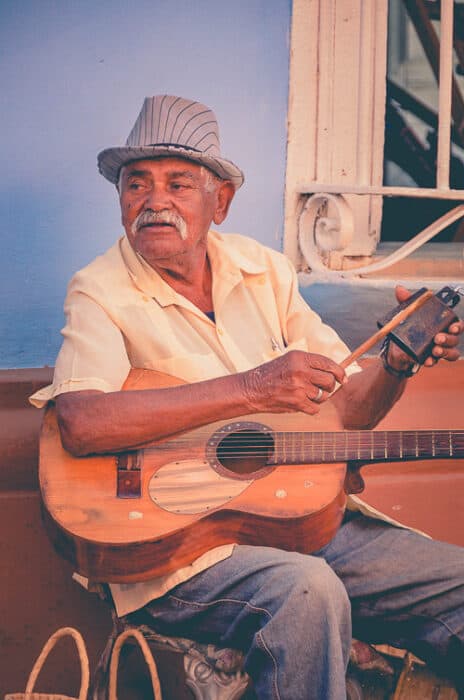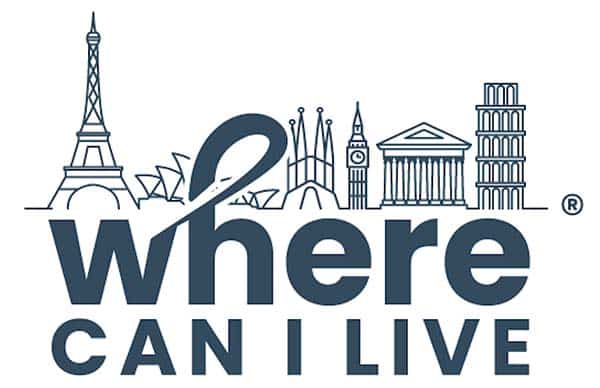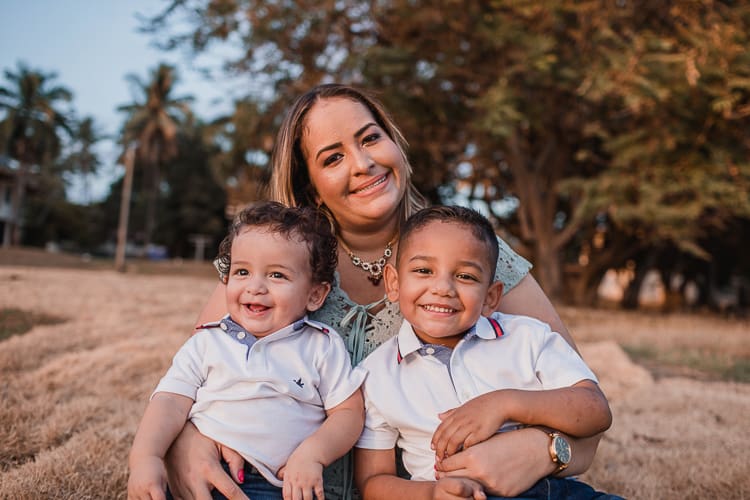Living in Puerto Rico has so much to offer. And it is not just the natural beauty that Expats in Puerto Rico rave about.
- Warm weather year-round
- Beautiful beaches
- Friendly people
- Delicious food
- Booming nightlife
- Tax benefits
- Affordable schooling
- Affordable housing compared to the U.S.A.
We’ll look at some of the most important things to consider if you are thinking about moving to Puerto Rico.

Healthcare for Expats living in Puerto Rico
The Puerto Rico healthcare system is similar to what you will find in the U.S.A. in many areas. High-quality medical facilities and experienced healthcare professionals are available, although some areas are better equipped than others. You may also find differences in insurance costs, access to care, and appointment wait times.
Medical Insurance
Healthcare in Puerto Rico is not free, so you’ll need an insurance plan to help cover your medical costs. If you are briefly visiting Puerto Rico, you can continue using your U.S. health insurance, but consider double-checking your coverage before traveling. For a permanent move to Puerto Rico, switching to local insurance is best. If you qualify for Medicaid, you can continue using it as it is valid on the island.
Private Healthcare
Signing up for private insurance will provide you with better quality healthcare, shorter appointment wait times, and a larger pool of healthcare providers. Local insurance plans are widely accepted around the island. Most cover standard health care costs, including medical, prescription, dental, and vision.
The largest provider of health insurance in Puerto Rico is Triple-S Salud. Triple-S offers coverage for emergency services in the U.S. if the provider is part of the Blue Cross Blue Shield group. Other insurance providers include Humana, FirstMedical, MCS, and Plan de Socios de Auxilio Mutuo. MCS also offers healthcare coverage, including emergencies, in the United States. You may have to prequalify for treatment, so you should refer to your policy or contact customer service for more information.
You will find that premiums are usually more affordable than on the mainland. In the U.S., you typically have to deal with deductibles on your cover. You must spend a certain amount of money out of pocket before your plan begins to cover your medical costs. You do not need to worry about meeting a specific deductible in Puerto Rico. You cover the co-payment up-front (sometimes none) for each visit, your prescription, and emergency room visit. Of course, consider double-checking your insurance to verify your coverage.
You can find all sorts of healthcare providers across Puerto Rico, from chiropractors and endocrinologists to physical therapists and cardiologists. No matter your medical needs, you will most likely find the right specialist for you. You will find that the metro area of San Juan has a more significant concentration of experienced doctors and high-quality medical care facilities. If you live farther away, don’t fret, you will still find quality healthcare near you. However, you may have to travel a bit further for specialized care.
Public Healthcare
Public healthcare in Puerto Rico is offered through a government-funded program, Vital, where eligible low-income or special needs residents can receive insurance. This program is underfunded, causing a shortage of doctors as they move to the U.S. for better salaries and working conditions.
Find a Healthcare Provider
The best way to find a healthcare provider is by asking a friend or your primary care doctor for a referral. Directories provided by health insurance companies are usually outdated and offer inaccurate information. To make appointments, call the office directly (no online scheduling) and be prepared to wait weeks or months for a slot. Some offices work by having appointment windows where treatment is on a first-come-first-serve basis. This delivery can mean being in the waiting room for a while.
There are also membership-based “concierge-style” options. Options include Pravan Clinic, Doctors on Call, Concierge Medical Services, and P.R. Concierge & Internal Medicine Services. They provide top-quality, personalized healthcare via in-person visits, online consultations, and more for a fee.
Pharmacies
If you need over-the-counter medicine or a prescription filled, there are local and chain pharmacies throughout the island, like Walgreens and CVS. There are also local pharmacies, commonly known as ‘farmacias de la comunidad,’ and you can find one in every town. This link is an updated directory of local pharmacies. In Old San Juan, that pharmacy would be Puerto Rico Drug.
Laboratory Tests
If you need lab work, there are plenty of laboratory facilities with bilingual staff throughout the island. Usually, you don’t need to make an appointment as they serve on a first-come-first-serve basis. Make sure you take your insurance card and lab work prescription to the facility. Before leaving, ask the lab when your result will be ready. When ready, the lab will have you pick the results up or send them to you via email – not directly to the doctor. You will then need to make an appointment to review your lab results with your physician.
Hospitals and Emergency Services
In case of a medical emergency, dial 911. Operators may not be bilingual and speak Spanish only, but you can be transferred to an English speaker if required.
Check your health insurance policy if it covers ambulance costs in an emergency. They may request payment upfront if the ambulance is from a private company.
There are various quality hospitals throughout the island. In the San Juan region, you can find Hospital Ashford (also known as El Presby) in Condado and Hospital Pavia in Santurce. Centro Medico is a public hospital that has excellent physicians and services. In Dorado, Sabanera Health, a hospital and outpatient health center that collaborates with John Hopkins, recently opened in March 2022.
Transport and travel in Puerto Rico
Ground Transportation
The best way to get around Puerto Rico is by car. Intercity bus services are limited, private charters are expensive, and moving around can be challenging. Driving on the main roads is easy. But, it can be more tricky once you go into the mountains through snaking roads. Ensure your location is marked and confirmed before embarking on the trip. In San Juan, you can likely get around without a car with careful planning and making use of Uber. Old San Juan is one of the few places you can walk anywhere. There’s no better way to explore the forts and streets than on your own two feet.
Airports
If you fly to Luis Muñoz Marín International Airport (SJU), it is about 7 1/2 miles east of San Juan. You can pick up a rental car here or take a taxi to your destination. Taxis from the airport charge a fixed rate to different destinations around the island. The airport’s website provides the fare list.
Puerto Rico has an airport on the West Coast, Rafael Hernández Airport (BQN) on the west coast in Aguadilla. It is very convenient if you plan to be on the West of the Island. Check the flight schedule for airlines like Spirit, United, or JetBlue to fly into that hub.
Bus services
First, know that public buses are called guaguas in Puerto Rico instead of the traditional Spanish word for bus, autobús. Two entities service San Juan. The main road connecting the train to the old city is handled by First Transit and operates on a fairly consistent schedule. Details here.
Autoridad Metropolitana de Autobuses runs all other routes, including extensive routes throughout the town and to the beaches. Rates are set, and the schedules are consistent. The base fare is $1.50. AMA buses usually run from about 5 a.m. until 8 or 9 p.m. (depending on the route and day of the week). Routes that originate in San Juan (5, 9, 21, and 53) depart near the cruise ship terminal.
Metro
San Juan’s Tren Urbano (Urban Train) is the first of its kind in the Caribbean. The metro has 16 stops along its single line and spans about 10 miles. You can travel from the city center to Centro Médico, the University, and the Deportivo at Bayamon. It is also convenient for outlying towns like Sagrado Corazon and the Hato Rey financial district. If you travel for a concert, the train is an easy way to access el Coliseo.
Ferry
Ferries are inexpensive and relatively reliable to reach Culebra and Vieques, the two Islands on the East. They are also popular to go from Cataño to Old San Juan. They’re operated by the Autoridad de Transporte Marítimo. You may book tickets online here. If you are in the Old City, a trip to Cataño to explore the culinary scene along their coastline is a great idea!

Is Living in Puerto Rico safe for Expats?
Yes, Puerto Rico is a safe place to visit and has a lower crime rate than many U.S. cities on the mainland. Petty crimes, such as pickpocketing or robbery, with the risk of theft would be the biggest concern to watch out for. Car theft is another issue to be wary of, so don’t leave valuables in your car.
Even though Puerto Rico has a high homicide rate, this is almost always restricted to drug trafficking and gangs. And high-risk areas are mainly public housing areas, known as caserios in PR.
Leisure and nightlife for Expats living in Puerto Rico
Sports and recreation
Baseball, basketball, and boxing are the most popular sports thanks to PR’s relationship with the US. Golfing, running, cycling, tennis, and volleyball are also activities on the island.
You can enjoy biking and skating throughout the island and in various parks, such as Parque Central, Santurce, and San Juan.
Due to PR being an island with crystal-blue waters, many Puerto Ricans also partake in water-based sports. Options include fishing, sailing, scuba, surfing, snorkeling, swimming, and windsurfing.
For camping, the government runs campgrounds with cabins around the island. You can also find camping grounds that are privately run. Some nature preserves do allow camping, but you would need to get a permit.
Cockfighting and horseracing remain popular due to the island’s Spanish roots.
Hiking
There are plenty of places around the island to enjoy hiking. For example, the Guánica Dry Forest, on the island’s south side, has numerous trails. The ranger at the entrance can provide you with a map of these trails.
In the town of Isabela, the Guajataca Forest has 27 miles of trails. The two most popular are the Interpretative Trail and the trail that takes you to Cueva del Viento (Cave of the Wind). You can hike both routes in one day and even explore the cave.
The Toro Negro State Forest has four types of forests that have lakes, rivers, natural swimming pools, and waterfalls. To hike and camp there, visit the ranger station on Route 143 KM 32.4 in the town of Villalba. There are also camping grounds in this forest.
In Arecibo, the Cambalache State Forest is perfect for a leisurely hike or even mountain biking. In Salinas, you can find el Arbol Solitario (Solitary Tree), where the “official” trailhead is off PR-1. It takes 90 minutes to complete the steep hike up the Cerro de Los Cielos. You can enjoy a breathtaking view of the Caribbean Sea from the top.
You can enjoy hiking and biking trails in the Cabo Rojo Wildlife Refuge, a subtropical dry forest. It is open from Monday to Saturday, while the Salt Flats Interpretative Center is open from Thursday to Sunday.
Nightlife
There is always a party in PR wherever you go. You can enjoy whatever atmosphere you choose, from fancy hotel nightclubs, and bars, to casual chinchorros (kiosks) around the island. San Juan has plenty of nightlife for one to enjoy, especially in Condado and Old San Juan. It offers everything from clubs to dance the night away and bars to enjoy a drink.
La Placita de Santurce is a farmer’s market during the day and then a street party at night. Current trendy restaurants include Pio Pio Champaigne bar, located within the Piloto 151 coworking space in Old San Juan. Distrito T-Mobile has a concert venue and various restaurants. In other towns around the island, such as Mayaguez, Aguadilla, and Rincon, you can party at chinchorros and bars.
Working in Puerto Rico
US citizens have the same right to work as they would in the U.S.A. However, non-US nationals will need a work permit.
There are jobs for Expats in Puerto Rico in tourism, pharmaceuticals, manufacturing, and a growing financial services industry.
Median Household Income: $21,058.
As of January 1, 2022, the minimum wage is $8.50/hour. A steady increment is set for the next two years unless the Minimum Wage Evaluation Commission disagrees. On July 1, 2023, an increase was established to $9.50/hour, and on July 1, 2024, to $10.50/hour. Some workers are exempt from the minimum wage, such as tipped workers and some student workers.
Per the Working Mother’s Act, employers must offer a minimum of eight weeks of maternity leave. The act covers all exempt and nonexempt employees and doesn’t excuse small businesses from providing paid leave. The law does not require employers to offer paternity leave. However, per the US Federal FMLA, eligible employees are allowed 12 weeks of unpaid, job-protected leave. Mothers who adopt a child are also entitled to paid leave.
Income Tax in Peurto Rico
| Net taxable income (USD) | Tax | |
| Not over 9,000 | 0% | |
| Over 9,000, but not over 25,000 | 7% of the excess over USD 9,000 | |
| Over 25,000, but not over 41,500 | USD 1,120 plus 14% of the excess over USD 25,000 | |
| Over 41,500, but not over 61,500 | USD 3,430 plus 25% of the excess over USD 41,500 | |
| Over 61,500 | USD 8,430 plus 33% of the excess over USD 61,500 | |
| Over 500,000 | For net taxable income over $500,000, there is an additional tax of 5% on income above $500,000. |
Aside from the personal income tax, an alternated basic tax, or ABT, is calculated by including some items exempt from the regular tax.
ABT rates:
| Net income subject to ABT (USD) | Tax (%) |
| Over 25,000 but not more than 50,000 | 1% |
| Over 50,000 but not more than 75,000 | 3% |
| Above 75,000 but not more than 150,000 | 5% |
| Over 150,000 but not more than 250,000 | 10% |
| Above 250,000 | 24% |
Tax options for self-employed service providers living in Puerto Rico
There is also a new optional tax for self-employed individuals rendering services. You can pay an optional tax on gross income rather than the income tax on net income.
Is Puerto Rico a good place for Remote work
Yes, Puerto Rico is a great place for remote workers. A wireless network and reinforced infrastructure are available to ensure you stay connected all the time. Multiple high-speed Wi-Fi providers allow you to stay connected when working remotely. There are also lodging and coworking spaces that offer high-speed internet as an amenity. Piloto 151 has five locations in the metro area to facilitate moving or relocating to Puerto Rico and having an accessible place to work.
Internet speed
After the hurricanes in 2017, the infrastructure was updated and reinforced to provide steady and reliable connectivity. There are six major internet providers and three 5G networks. State-of-the-art cables and satellites enable functional broadband connectivity.
USA citizens remote working from Puerto Rico
On June 30, 2022, Act. No. 52 addressed the issue of employees working remotely in PR for employers with no business connection on the island. U.S citizens do not need a visa or even a passport to work from PR. After December 31, 2021, companies with employees working remotely from Puerto Rico will not be considered “engaged in trade or business.” They will need to meet these conditions.
- During the taxable year, the business (i.e., the taxpayer) cannot have an office or a fixed place of business in PR.
- During the taxable year, the taxpayer cannot have an “economic nexus” with Puerto Rico.
- The taxpayer is not a merchant who is in the business of sales of taxable items in Puerto Rico, including any wholesaler.
- The remote worker is not an officer, director, or majority shareholder of the taxpayer.
- Services rendered by the remote worker are for the benefit of clients or businesses of the taxpayer with no connection with PR.
- The taxpayer reports the income paid to the remote worker on a Federal Form W-2 or a Form 499R-2/W-2PR.
The remote worker will not be considered to have an economic nexus with PR. This is the case even when the worker has a home office, claims home office expenses, and has to complete tasks from an employer’s location.
Therefore, the employer does not withhold PR income taxes. However, they should be careful with PR’s labor and employment laws as they can be tricky, especially ones enacted so recently.

Education and Training
Overview of the education system
The education system in PR is based on the US model, although public schools teach mainly in Spanish. Also, school is compulsory from 5-18 years of age.
Public schools have a standard state curriculum. Primary or elementary school encompasses the first six grades, while secondary education is for the next final seven years. However, private schools, which are not free, tend to be specialized and use English as the teaching language.
There is also the option to attend vocational schools, which are mostly privately owned.
There are plenty of colleges and universities in PR, with both public and private institutions available.
Local provided education
PR grants the right to an education to every citizen on the island. Public schools provide free education at the elementary and secondary levels. Schools in rural areas tend to be under-resourced; therefore, the quality of public schools can vary.
The language spoken at these schools is Spanish. At the same time, English is taught as a second language and a compulsory part of the curriculum.
Private schools are operated by non-governmental institutions and are not free. Language can vary from bilingual teaching to English or Spanish only.
International schools – costs, where available
There are no foreign-curricula schools in PR, but some schools offer International Baccalaureate (IB), allowing for an easier transfer between schools. These schools are typically expensive.
Homeschooling
Homeschooling in PR is not regulated and operates as “non-governmental schools.” Still, homeschools are required to follow the same subjects and the same number of days as public schools.
Higher education
Good college education in PR is very affordable. There are also plenty of colleges and universities in PR, with both public and private institutions available.
The main public university system is the University of Puerto Rico, established in 1903, with 11 campuses around the island. Other universities include:
- Universidad Interamericana de Puerto Rico
- Universidad Politécnica de Puerto Rico (PUPR)
- Universidad del Sagrado Corazón
- Sistema Universitario Ana G. Méndez (SUAGM)
These colleges follow the US system and offer bachelor’s degrees, Master of Arts and Master of Science degrees, and PhDs. They also have a wide range of degrees, including architecture, engineering, communication, law, physics, education, computer science, nursing, and business administration, among many others. Some private schools offer specialized higher education learning in professional trades, such as business and tourism. Most courses are taught in English and Spanish.
Cost of tertiary education and scholarships offered
Not only are colleges in PR affordable, but most programs in PR offer scholarships and fellowships. Some of these scholarships are from the governments, post-secondary institutions, and organizations that help students with their studies in PR. These also may include travel grants and financial aid. Therefore, scholars, researchers, international students, and professors will find PR to be an attractive destination.
Accommodation for international students living in Puerto Rico
Some universities don’t offer on-campus housing for students, while others do. If no on-campus housing is available, there are usually apartments or accommodations for rent outside the campus. Consider transportation costs as it is easier to move around PR by car.
Most universities will help you find reasonable accommodations. Also, word of mouth from other students and notice boards will help with your research.
Best places to live in Puerto Rico
Puerto Rico comprises six regions on the main island, with 78 municipalities, including the smaller islands of Vieques and Culebra. Each area has its unique characteristics and neighborhoods. Let’s break it down.
The pricing on real estate property for rent or sale will vary depending on the size of the unit and location. A well-known local resource for research pricing is Clasificados Online.
Área Metro
The metro includes ten towns surrounding Puerto Rico’s capital of San Juan: San Juan, Guaynabo, Bayamón, Dorado, Caguas, Carolina, Cataño, Toa Alta, Toa Baja, and Trujillo Alto. This is considered the urban downtown of Puerto Rico, where history and culture intersect with vibrant city life. It is also home to SJU airport.
POI:
- San Felipe del Morro
- Casa Bacardí
- Plaza Las Américas
- San Juan Marriott Resort & Stellaris Casino
- Sheraton Puerto Rico Hotel & Casino
⭐ Piloto’s top pick neighborhoods:
Old San Juan
Old San Juan is rich in Spanish architecture. It’s known for its historic buildings, government agenciesand , La Fortaleza (the governor’s home), and it’s also home to Piloto151’s coworking space. On any given day, visitors and locals can be strolling its cobblestone streets, flying kites in El Morro, cruises disembarking at the port, at a festival, or Mercado.
Home buyers with different budgets have several options to rent, buy, or Airbnb.
Condado (apartment living)
Condado is San Juan’s most luxurious district, sitting on the oceanfront, to hotels, with a busy nightlife, beachside restaurants, and world-renowned, upscale brand boutiques. You can find everything within walking distance and much to do. Go paddleboarding in the Condado’s lagoon, play beach tennis in Ocean Park, or visit the monthly Mercado agrícola. You can walk your kids to bilingual private schools (Robinson’s, Saint John’), shop for groceries in Freshmart, or bar hop in the swanky hotels.
Miramar
Sitting across from Condado, Miramar is an affluent neighborhood of San Juan. It is quiet, close to everything, and distinguished by its many Spanish-style homes. It is a good mix of restaurants and residential communities. Order pastries from Lucia Patisserie, eat and shop for groceries at La Hacienda Meat Center, or get tickets to an event at the Puerto Rico Convention Center. And visit Distrito T-mobile, an event venue with restaurants, music, and entertainment.
Santurce
The more eclectic and arty neighborhood of San Juan is Santurce. It has many hotspots for nightlife, culture, and entertainment. Several renowned fine arts institutions include the Puerto Rican Museum of Art and the Museum of Contemporary Art (MAC). Another hotspot is La Placita de Santurce, an outdoor Mercado or plaza that transforms at night as a hotspot for drinks and eating. Further, Santurce is known for its distinguished private schools, which are scattered all over the neighborhood. The 20 private schools in Santurce offer various excellent educational opportunities.
Hato Rey
Hato Rey is home to Puerto Rico’s financial district. Tucked away in Hato Rey are many residential apartment buildings, the Coliseo de Puerto Rico, where most concerts are hosted, and train stations.
Guaynabo
Guaynabo is another well-known residential suburb with private communities and houses with yards.
Caguas
A little farther away from Guaynabo, Caguas is another suburb with lower-priced housing and spacious residential communities. The new express lane connecting San Juan to Caguas offers traffic-free flow from one end to the other.
Living in the North of Puerto Rico
There are nine towns in the north of Puerto Rico: Arecibo, Barceloneta, Camuy, Dorado, Hatillo, Manatí, Toa Alta, Vega Alta, and Vega Baja. Here you can explore splendid caves, beautiful beaches, and exceptional resorts.
POI
- Mar Chiquita
- Puerto Rico Premium Outlets
- Río Camuy Cave Park
⭐ Piloto’s top pick town: Dorado – a quiet town for people looking into more extensive housing and beach life. Although traffic during rush hour is not ideal, Dorado Beach Resort is popular with one of the highest average property prices.
South
The south of Puerto Rico is comprised of 11 towns: Ponce, Coamo, Salinas, Arroyo, Guayama, Guayanilla, Juana Díaz, Patillas, Peñuelas, Santa Isabel, and Villalba. If you are looking to immerse yourself in colorful architecture, historical art, and stunning natural beauty, this is the ideal area for you.
POI
- Museo de Arte de Ponce
- Castillo Serrallés
- Parque de Bombas
- Cruceta del Vigía
- Caja de Muertos
- Hot Springs of Coamo
⭐ Piloto’s top pick town: Ponce
East
Taking it to the east! Puerto Rico’s eastern region comprises 15 towns where you can enjoy secluded beaches, a legendary rainforest, museums, gardens, and island excursions. The towns that make up this region include Loíza, Gurabo, Juncos, Las Piedras, San Lorenzo, Caguas, Canóvanas, Río Grande, Luquillo, Fajardo, Ceiba, Naguabo, Maunabo, Humacao, and Yabucoa.
POI
- El Yunque
- Balneario La Monserrate
- Carabalí Rainforest Park
- Jardín Botánico y Cultural de Caguas
- Criollo Heart Trail
⭐ Piloto’s top pick neighborhoods: Río Grande, especially St. Regis Bahia Beach Resort and Río Mar.
West
Let’s talk about living in the west of Puerto Rico aka the surfing capital. This region is the opposite of the metropolitan area. Some consider the western side to be a very relaxing area. The towns of Aguada, Aguadilla, Añasco, Cabo Rojo, Guánica, Hormigueros, Isabela, Lajas, Las Marías, Maricao, Mayagüez, Moca, Quebradillas, Rincón, Sabana Grande, San Germán, San Sebastián, Lares, and Yauco offer the best sunsets and surfer vibes.
POI
- Los Morrillos Lighthouse
- Salt flats
- Playuela
- Cabo Rojo National Wildlife Refuge
- La Parguera
⭐ Piloto’s top pick towns: Rincón and Mayagüez
Área Central
Let’s move te Cordillera Central, the interior mountain region of Puerto Rico. History and culture in this region are rooted in agriculture running from east to west through 15 municipalities. Most of the island’s coffee is produced here. There is diverse vegetation and several haciendas that you can visit in Adjuntas, Aguas Buenas, Aibonito, Barranquitas, Cayey, Ciales, Cidra, Comerío, Corozal, Florida, Jayuya, Morovis, Naranjito, Orocovis, and Utuado to get fully immersed in the coffee experience.
POI
- Toro Verde Nature Adventure Park
- Tanamá River
- Hacienda Tres Ángeles
⭐ Piloto’s top pick town: Utuado
Las Islitas
Boat rides, anyone? Meet us at Vieques & Culebra! These enchanting islands are a short boat ride away from Puerto Rico. You will find some of the world-renowned beaches and the world’s brightest bioluminescent bay here. It’s Puerto Rico’s best-kept secret!
POI
- Mosquito Bay
- Bioluminescent Bay
- Flamenco Beach
- Vieques National Wildlife Refuge
- Cayo Luis Peña Natural Reserve
⭐ Piloto’s top pick island: Culebra
Retiring to Puerto Rico
Puerto Rico is a U.S. territory; therefore, US citizens do not need a residency permit to live or retire in Puerto Rico. If you want to establish PR residency to make it your tax home, you must spend 183 days per year on the island. The first thing you will need is a virtual mailbox address. You can get your PR driver’s license or change your voter registration, so the IRS is clear that PR is your home.
It is a different case if not a US citizen, as PR has no government body dealing with external affairs. Puerto Rico is a US territory; therefore, US consulates are responsible for handling visa applications. Even so, the US does not have a retirement visa program. If you don’t have someone in the US who is a close relative that can be a sponsor, you apply for an EB-5 investor’s visa. This visa is meant for wealthy foreigners who want to live and invest in the US.
Since PR is a US territory and not a state, it has its own tax code. There are specific rules for the qualification of retirement plans covering employees within its jurisdiction. Usually, PR plans are qualified only under PR rules.
Healthcare for retirees living in Puerto Rico
Healthcare in Puerto Rico is not free; therefore, you need an insurance plan to help cover your medical costs. If you are briefly visiting Puerto Rico, you can continue using your U.S. health insurance, but consider double-checking your coverage before traveling. US citizens have access to their Medicare benefits in PR, and coverage remains the same. If you are not yet eligible for Medicare and are retiring permanently to Puerto Rico, switching to local insurance is best.
Private Healthcare
Signing up for private insurance will provide you with better quality healthcare, shorter appointment wait times, and a larger pool of healthcare providers. Local insurance plans are widely accepted around the island. Most cover standard health care costs, including medical, prescription, dental, and vision.
The largest provider of health insurance in Puerto Rico is Triple-S Salud. Triple-S offers coverage for emergency services in the U.S. if the provider is part of the Blue Cross Blue Shield group. Other insurance providers include Humana, FirstMedical, MCS, and Plan de Socios de Auxilio Mutuo. MCS also offers healthcare coverage, including emergencies, in the United States. You may have to prequalify for treatment, so you should refer to your policy or contact customer service for more information.
You will find that premiums are usually more affordable than on the mainland. In the U.S., you typically have to deal with deductibles on your cover. These require you to spend some money out of pocket before your plan begins to cover your medical costs. You do not need to worry about meeting a specific deductible in Puerto Rico. You cover the co-pay up-front (sometimes none) for each visit, your prescription, and emergency room visit. Of course, consider double-checking your insurance to verify your coverage.
Public Healthcare
Public healthcare in Puerto Rico is offered through a government-funded program, Vital, where eligible low-income or special needs residents can receive insurance. This program is underfunded, causing a shortage of doctors as they move to the U.S. for better salaries and working conditions.
Best places to retire in Puerto Rico
Puerto Rico has communities of retirees who have moved from the US. Most settle in San Juan and throughout the beach areas east of the city. This area has the best access to amenities and an urban feel. Dorado is another excellent area to retire, with a more relaxed pace of life. Of note, though, this area is more expensive than other neighborhoods with more upscale housing offerings.
Rincon, a quiet beach town with beautiful sunsets, is located about 2.5 hours from San Juan and is perfect for retirees. If looking for a cooler area on the island, consider Cayey for retirement. This neighborhood is located in the Central Mountain range and has lower temperatures than other parts of the island.
If looking for something more secluded, consider Culebra & Vieques. These enchanting islands are a short boat ride away from Puerto Rico. You will find some of the world-renowned beaches and the world’s brightest bioluminescent bay here. It’s Puerto Rico’s best-kept secret!
Living in Puerto Rico, quick reference
Commonwealth of Puerto Rico (Estado Libre Asociado de Puerto Rico)
Government type
Unincorporated territory of the U.S.
Capital
San Juan
Currency
United States Dollar (USD)
Languages
Spanish and English
Time Zones
AST; Atlantic Standard Time (UTC – 4:00)
Emergency number
911
Calling Code
787; 939
Voltage
120V supply voltage; standard frequency 60Hz. Outlet type: A, B
Could living in Puerto Rico be your future?
Life in PR can be a culture shock to some, but there are many advantages to living on the Island of Enchantment. There is warm weather, beautiful beaches, friendly people, delicious food, booming nightlife, tax benefits, and affordable schooling, among many other advantages. Living in Puerto Rico means life moves at an island pace, and that is a wonderful thing.








